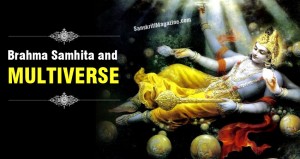
Classical Indian Concept Of Environmental Protection And Art Preservation
The melodious madrigals of Sanskrit literature do not comprise of only high order of lyricism for the passionate readers of literary romances but these have

The melodious madrigals of Sanskrit literature do not comprise of only high order of lyricism for the passionate readers of literary romances but these have

A Study of Agnihotra yajna effect on environment and plants was performed in New English School, Ramanbaug by Pranay Abhang (Teaching Associate, Institute of Bioinformatics

Long, long time ago, from the sparkling womb of Eternity, rose a profound rhyme. It circled the splendid Heavens spreading a rapture so divine that

In the ‘Brahma Samhita’ fifth chapter there is a description of variegated planetary system even within the material world. And in the Bhagwat Geeta, such

The Nine Pearls, sometimes known as the Nava Moti (or nine gems, or “mani”), are a group of sacred gemstones described in the Vedic text

The Hymns of Dirghatamas in the Rig Veda Some scholars have claimed that the Babylonians invented the zodiac of 360 degrees around 700 BCE, perhaps

Chhath Puja is one of the most revered festivals, especially in Bihar, Jharkhand, and Uttar

As the festival of lights approaches, the excitement for Diwali grows. Celebrated across India and

Learn about the significance and rituals of Navratri Day 9, dedicated to Goddess Siddhidatri, who grants all supernatural powers. Discover her mantra, spiritual significance, and how to worship her for fulfillment.

Discover the significance of Navratri Day 8 as we honor Goddess Mahagauri, the symbol of purity and serenity. Learn about the rituals, mantra, and offerings for this special day of Navratri 2024.

Explore the significance and rituals of Navratri Day 7 dedicated to Goddess Kalaratri, the fierce form of Durga. Discover her connection to the Sahasrara Chakra, her mantra, offerings, and more.

Sanskriti comes from the Sanskrit root “kr” which means to do or to make prefix “sam” is applied before it to convey a sense of embellishment. It means actions done for the holistic refinement and perfection all the potentialities within a human being.
“The term “Rishi” in Sanskrit originates from a root that means “To See.” Rishis, quite literally, “see” truths that are unveiled to them in elevated states of consciousness. .These are recorded in Sacred texts called Upanishads , Vedas etc. The wisdom imparted by ancient Rishis has not only enriched the realm of inner science but has also played a pivotal role in shaping and advancing modern scientific understanding. Let us Explore……
Copyright © 2024. Sanskriti Magazine
Copyright © 2024. All rights reserved.